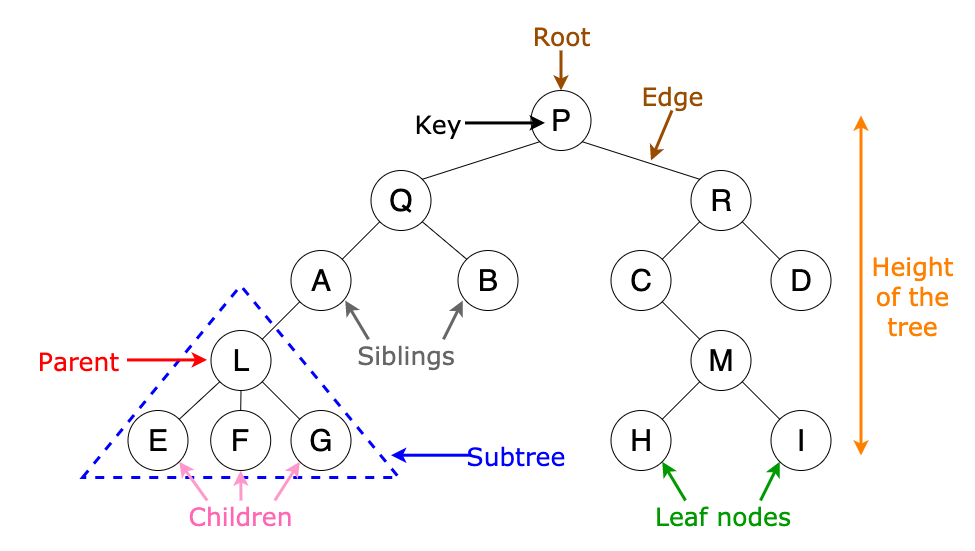
Tree data structure is a hierarchical data structure that consists of nodes connected by edges. It is called a “tree” because it resembles a tree in the real world, with a root node at the top and branches extending downwards. Each node in a tree can have zero or more child nodes, except for the root node, which has no parent.
Types of Trees:
- Binary Tree: A binary tree is a tree in which each node can have at most two children, referred to as the left child and the right child.
Binary Search Tree (BST): A binary search tree is a binary tree in which the left child of a node contains a value smaller than the node’s value, and the right child contains a value greater than the node’s value. This property allows for efficient searching, insertion, and deletion operations.
AVL Tree: An AVL tree is a self-balancing binary search tree. It maintains a balance factor for each node to ensure that the tree remains balanced, which improves the overall performance of operations.
B-tree: A B-tree is a self-balancing search tree that is commonly used in databases and file systems. It is optimized for systems that read and write large blocks of data, making it efficient for disk-based storage.
Red-Black Tree: A red-black tree is another type of self-balancing binary search tree. It ensures that the tree remains balanced by applying specific rules related to node coloring.
Tree Operations:
- Insertion: Adding a new node to the tree in the appropriate position based on its value and the tree’s structure.
- Deletion: Removing a node from the tree while maintaining the tree’s structure and properties.
- Search: Finding a specific node in the tree based on its value.
- Traversal: Visiting all nodes in the tree in a specific order. There are different traversal techniques, such as preorder, inorder, and postorder.
Applications of Trees:
File Systems: Tree data structures are used to represent hierarchical file systems, where directories and files are organized in a tree-like structure.
Organization Charts: Trees can represent the hierarchical structure of organizations, with each node representing an employee and its children representing subordinates.
Compiler Design: Trees are used in compilers to represent the syntax of programming languages through abstract syntax trees (ASTs). ASTs help in analyzing and processing the code.
Decision Trees: Decision trees are used in machine learning and data mining for decision-making tasks. They help in classification and regression by organizing data into a tree-like structure based on features.
Network Routing Algorithms: Trees are used in network routing algorithms to determine the optimal path for data transmission between nodes in a network.
These are just a few examples of the many applications and variations of tree data structures. Trees provide a flexible and efficient way to organize and process hierarchical data
